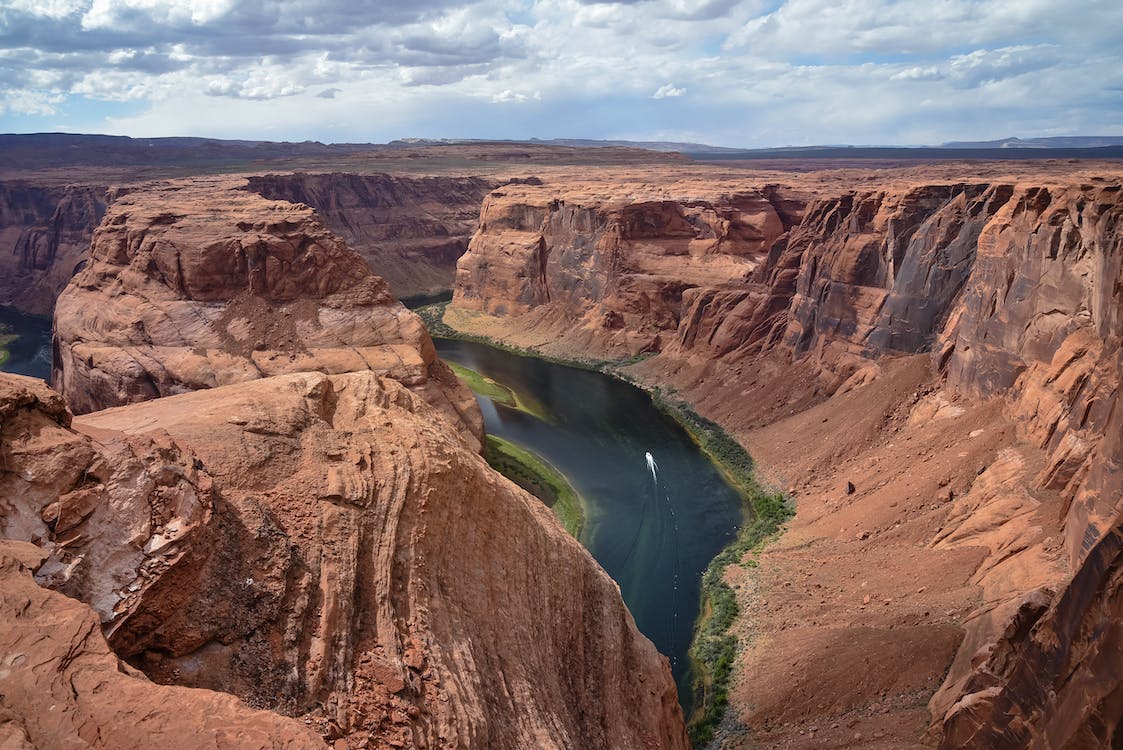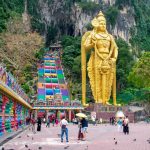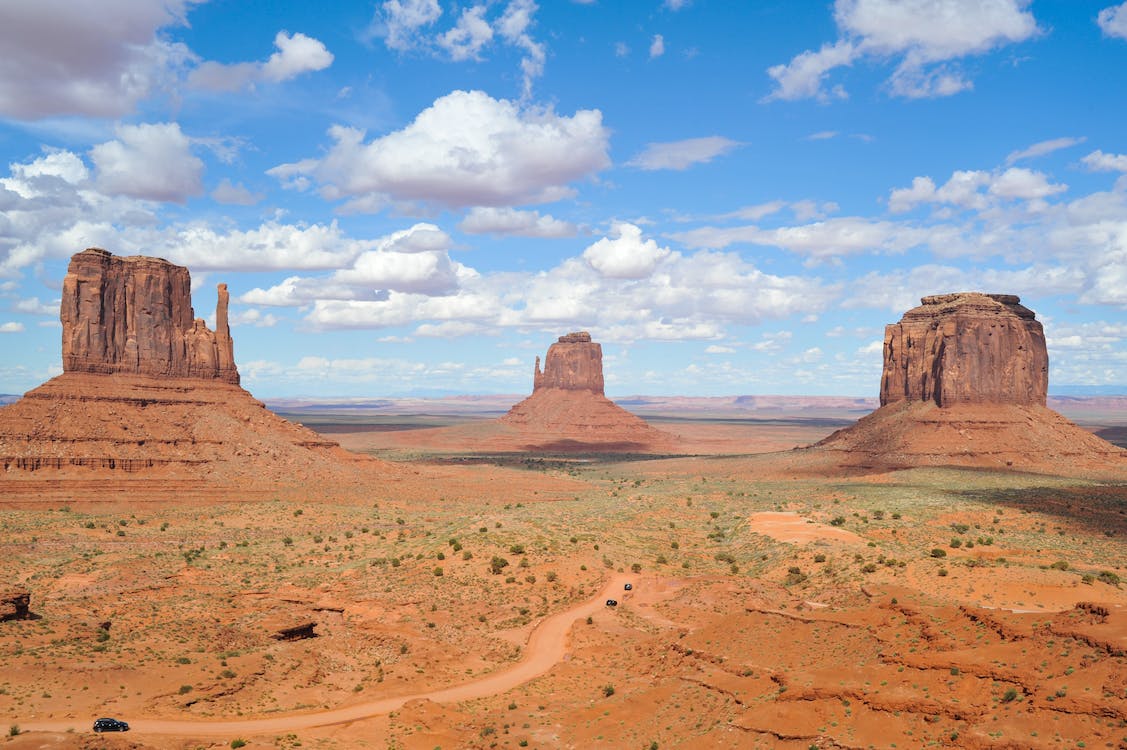
Top Tourist Attractions in Arizona
Arizona’s Top Sights are numerous and breath taking. Arizona is renowned as the Grand Canyon State and the Copper State, celebrated for its striking sandstone formations and collection of Old West mining towns that appeal to both nature enthusiasts and history aficionados. However, Arizona has more to offer than just deserts and cowboys. The state is also home to forests, lakes, and bustling urban areas with art galleries, wineries, and health-oriented retreats.
Arizona, located in the heart of the American Southwest, is abundant in natural wonders, lively cities, and charming small towns. Although the Grand Canyon attracts visitors from all over the world, those who venture deeper into the state will discover unique and captivating destinations.

Arizona is an outstanding tourist destination, offering numerous must-visit places and attractions that are distinct and noteworthy. While cities such as Phoenix and Sedona are excellent vacation spots, exploring beyond the urban areas will lead you to Native American cliff dwellings, ancient cultural remnants, and historic ghost towns from the mining era.
Arizona’s terrain is also ideal for outdoor enthusiasts, with deserts, lakes, mountains, slot canyons, saguaro cactus, buttes, waterfalls, and even a volcano offering an endless array of possibilities for travelers seeking adventure.
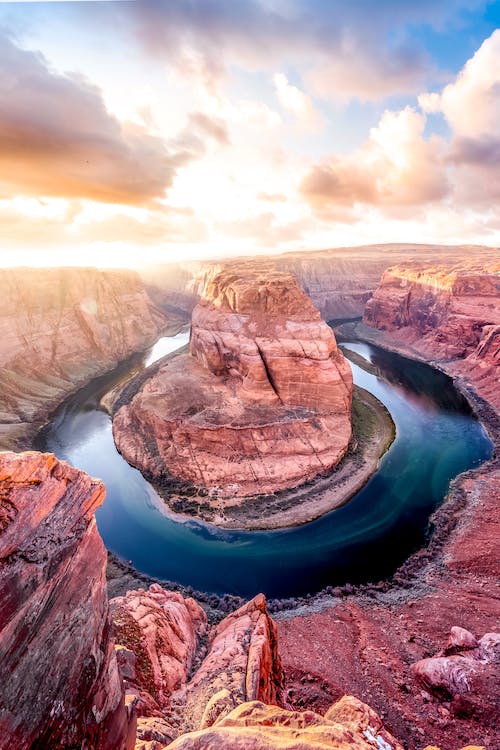
Arizona offers a wide range of experiences for visitors, from natural wonders and outdoor adventures to cultural attractions and vibrant cities. It’s a great destination for those seeking warm weather and stunning landscapes, and there’s something for everyone, whether you’re looking for relaxation, adventure, or exploration. With so many unique places to visit, it’s easy to see why Arizona is a popular vacation spot year-round.
Arizona offers breathtaking natural landscapes, bustling cities, luxurious spas, and a warm climate all year round, making it the perfect destination for any vacation. With its vast array of natural wonders, charming small towns, and outdoor adventure opportunities, Arizona has something for every traveler. From desert landscapes, lakes, mountains, and waterfalls to slot canyons, saguaro cactus, and even a volcano with downhill skiing, Arizona has a diverse range of attractions to explore. To help plan your trip, take a look at our list of the top places to visit in Arizona. Whether you’re looking to experience cultural attractions, admire the Grand Canyon, or explore the great outdoors, Arizona has it all. We’ll guide you to the best cities, national parks, and outdoor attractions, and offer plenty of inspiration for your upcoming trip. Whether you’re planning a quick weekend getaway or an extended vacation, Arizona has some of the most stunning and scenic places to visit in the United States.
We have curated a list of the top destinations to explore in Arizona, in no particular order.
Grand Canyon National Park
Grand canyon is Among the top 10 best travel destinations in Arizona for a good reason, as it is large enough to be visible from space. The Canyon offers breathtaking views, a diverse range of flora and fauna, and exciting activities to engage in, ensuring that there is never a dull moment.

The Grand Canyon is an absolute must-visit on any Arizona bucket list. For centuries, its stunning red and orange colors have attracted visitors from all over the world. Standing on the rim and gazing out at the endless ridges and ravines is an awe-inspiring experience that’s hard to put into words. The Colorado River has been shaping the canyon for millions of years, resulting in some of the most incredible views in the USA. Popular activities at the Grand Canyon include strolling along the Rim Trail, hiking into the canyon on the Bright Angel or South Kaibab trails, and watching the sunset from various viewpoints. The national park is divided into two sections, with the South Rim being the more popular and featuring iconic desert views, while the North Rim is less visited but still beautiful, with dense forests and wild bison herds. The famous glass Skywalk is located at Eagle Point, which is part of Grand Canyon West and about a 2.5-hour drive from Las Vegas. 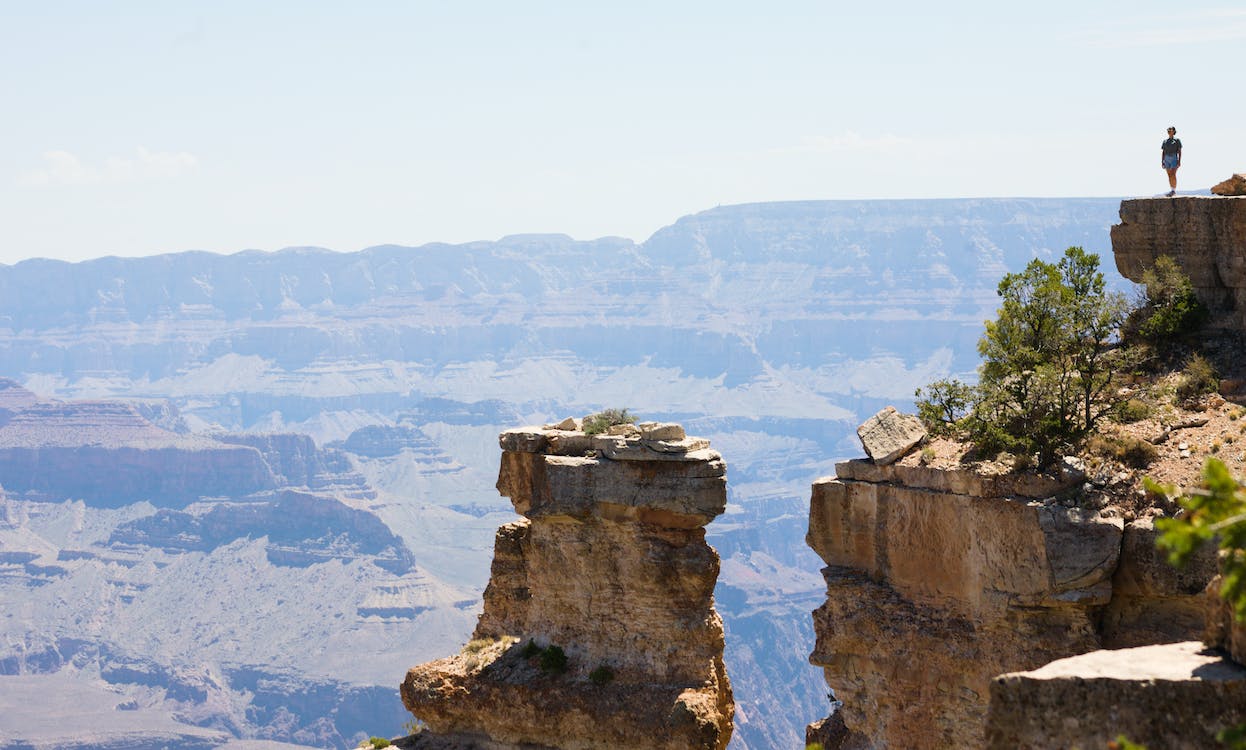
Grand Canyon National Park is a renowned landscape in Arizona and one of the most iconic destinations in the United States due to its unforgettable scenery and stunning geological formations. As the sixth most-visited national park in the country, this northern Arizona canyon plunges a mile deep.
If you’re planning a visit to Grand Canyon National Park, it’s important to note that the park spans 1,218,375 acres, but you can begin your trip by choosing one of the park’s designated rims for your first glimpse into the canyon. The South Rim, which features the beloved lookout point Mather Point, is a popular year-round destination for most visitors. In contrast, only 10% of park visitors explore the North Rim, which is accessible from mid-May to mid-October. Although the North Rim is less frequented, it offers its own distinct and stunning vistas and is an excellent option for those who prefer to avoid crowds.

For thrill-seekers, white-water rafting on the Colorado River is an option, while geology enthusiasts can marvel at the canyon walls, which provide a glimpse into the Earth’s history.
Overall, the Grand Canyon is a must-see attraction for nature lovers and those with a casual interest in geology. There is something about this geological wonder that inspires awe in the human spirit, and it is undoubtedly worth visiting for a once-in-a-lifetime experience.
Monument Valley
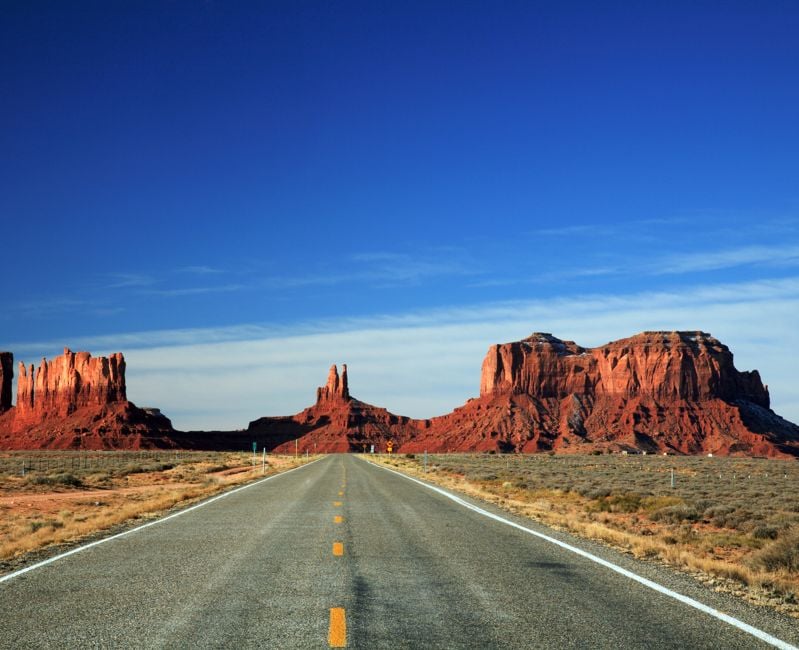
Monument Valley consists of over 91,000 acres. The entrance is located in Utah, but the Valley extends into Arizona. Many of the most-photographed rock formations are in Utah. Today, Monument Valley is a Navajo Nation Tribal Park.
In the Navajo language, Monument Valley is called Tse′ Bii’ Ndzisgaii, which means white streaks amid the rocks, or clearing among the rocks. The Navajo regarded this area as an enormous hogan (traditional Navajo dwelling) with Gray Whiskers and Sentinel pinnacles as its door posts. The fireplace is the butte near Goulding’s Lodge. Its door faces east near the Tribal Park ranger station. Two soaring buttes, known as the Mittens, were thought to be the hands of a deity.
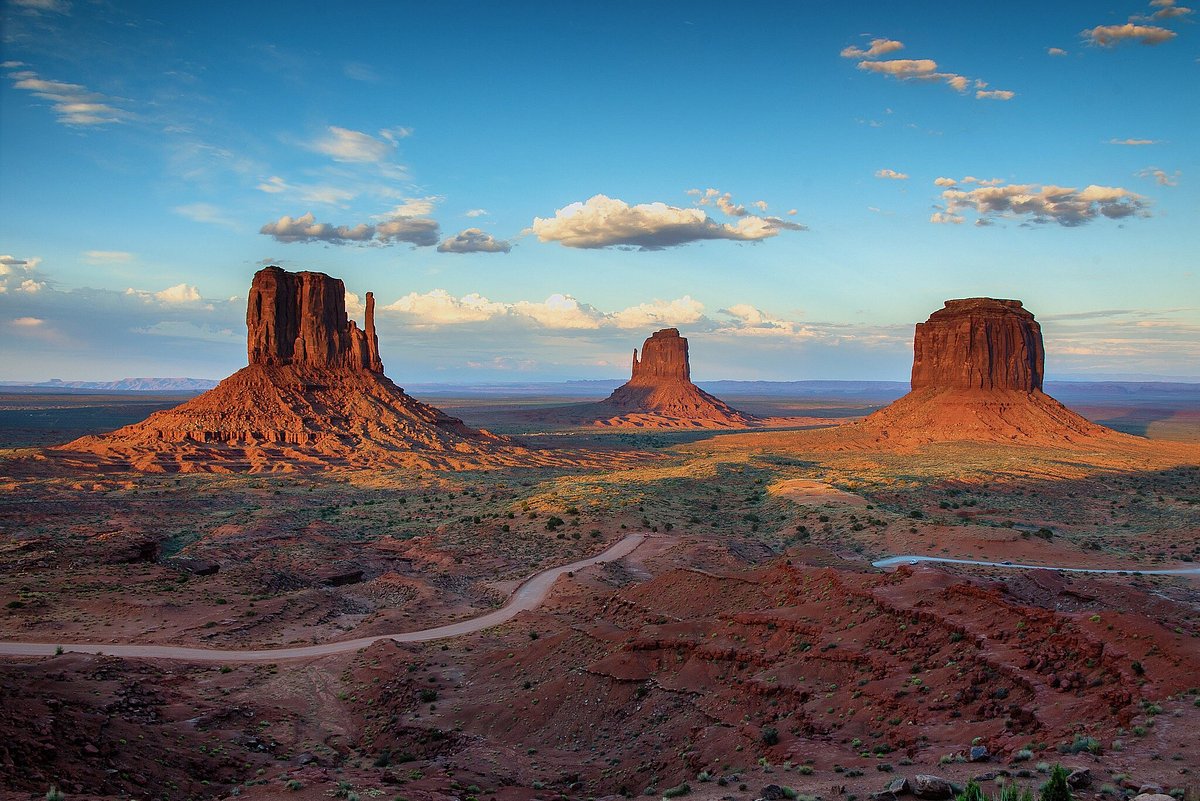
The Monument Valley Navajo Tribal Park is an excellent location to appreciate Arizona’s natural marvels and breathe in the fresh air. This National Park, with its red sandstone formations, is perfect for hiking and capturing stunning photographs. Although Monument Valley has been featured in numerous movies and TV shows, it’s still worthwhile to make the trip and relish in the picturesque vistas.
Set amidst a vast and barren desert that seems to stretch on endlessly, the colossal sandstone buttes rise magnificently toward the sky, their vibrant red and orange hues contrasting beautifully against the blue horizon. Known as the “Valley Between the Rocks” by the Navajo, this awe-inspiring destination is a must-visit when exploring Arizona.
Hoover Dam

Less than an hour’s drive from the Las Vegas Strip, Hoover Dam is a remarkable engineering feat that has become a significant tourist attraction. Constructed in 1936, the dam was one of the most extensive concrete projects worldwide at the time and still ranks among the largest dams globally, making it a popular destination for visitors to Las Vegas.
The massive concrete gravity dam that controls the Colorado River, known as Hoover Dam, appears imposingly large. Viewing the iconic structure from various vantage points, such as walking across the bridge or exploring it on a guided tour, can make one feel insignificant due to its enormity.
As a hydroelectric dam, Hoover Dam generates power for the southwestern United States and Las Vegas, creating a special connection between the city and the dam. The massive power plant at the dam provides a substantial portion of the energy required to power Las Vegas’ bright lights and signs, while Lake Mead, the reservoir formed by the dam, supplies much of the city’s water.
Completed in 1935, the Hoover Dam stands at 736 feet above the canyon floor and was the tallest dam globally, constructed to supply water and power to arid Southwestern states. Despite being considered a remarkable feat of engineering, the laborers who built the dam worked in harsh, dangerous conditions during the Depression era to finish the project.
There are numerous ways to reach Hoover Dam from Las Vegas, including driving and parking for free in remote parking lots, walking across the dam’s pedestrian walkway, or taking a stroll on the Mike O’Callaghan-Pat Tillman Memorial Bridge, which provides breathtaking views of the dam. Visitors can also purchase tickets for guided tours of the dam and its interior, the power plant, or opt for a self-guided tour that includes access to the visitor center, museum, and observation deck.
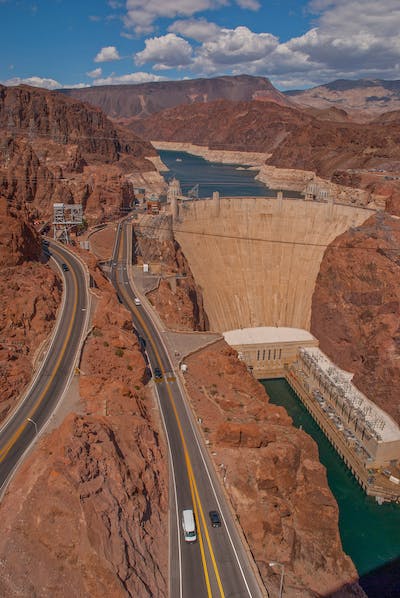
Canyon de Chelly
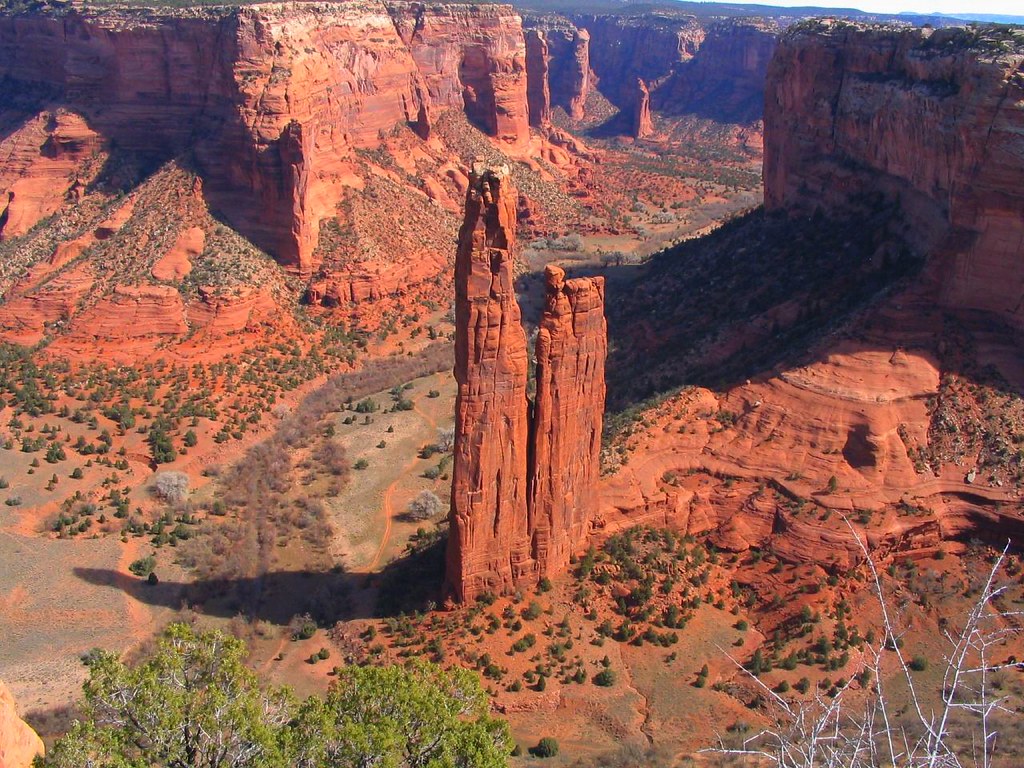
Canyon De Chelly National Monument is a popular national monument that has been continuously inhabited for over 5,000 years by the Anasazi and Navajo people. Despite being in ruins, the old buildings are still worth seeing as they are carved into the side of the canyon walls. Private tours and ranger-led hikes are available, and visitors can explore some of the cliff dwellings. However, most of the ruins are not accessible to visitors. The canyon has a tragic history of numerous massacres, but it is now owned and managed by the Navajo people. Visitors can take advantage of various hiking trails and horseback tours, and while Spider Rock is the most distinctive feature of the canyon, there are also stunning views along the rim.
Antelope Canyon

DCF 1.0
Antelope Canyon is a stunning natural wonder that should be seen for its mesmerizing and unique beauty. The twisting and winding cracks, along with the soft red tones of the sandstone walls and the enchanting sunbeams, make it a beautiful sight to behold. There are two parts of the canyon – the Upper and Lower Antelope Canyon – both with distinctive features and beautiful views that are only accessible through guided tours. Additionally, Antelope Canyon is located in a Navajo Tribal Park, which adds cultural significance and a unique perspective to the experience. Overall, Antelope Canyon is a must-see destination for anyone interested in natural wonders and breathtaking scenery.
The sandstone walls of Antelope Canyon are a captivating sight to explore, as sunlight streams through and casts a dazzling glow upon the reddish hues. The canyon consists of two sections, known as ‘The Crack’ and ‘The Corkscrew’, each boasting distinct characteristics that make them worth visiting.
Both areas exhibit a fluidity in the rock formations, resulting from the natural erosion of the sandstone. Situated within the Navajo Tribal Park, visitors can only access the Upper and Lower sections of Antelope Canyon through guided tours. Remember to join a guided tour to experience the beauty of these captivating canyons.
Meteor Crater
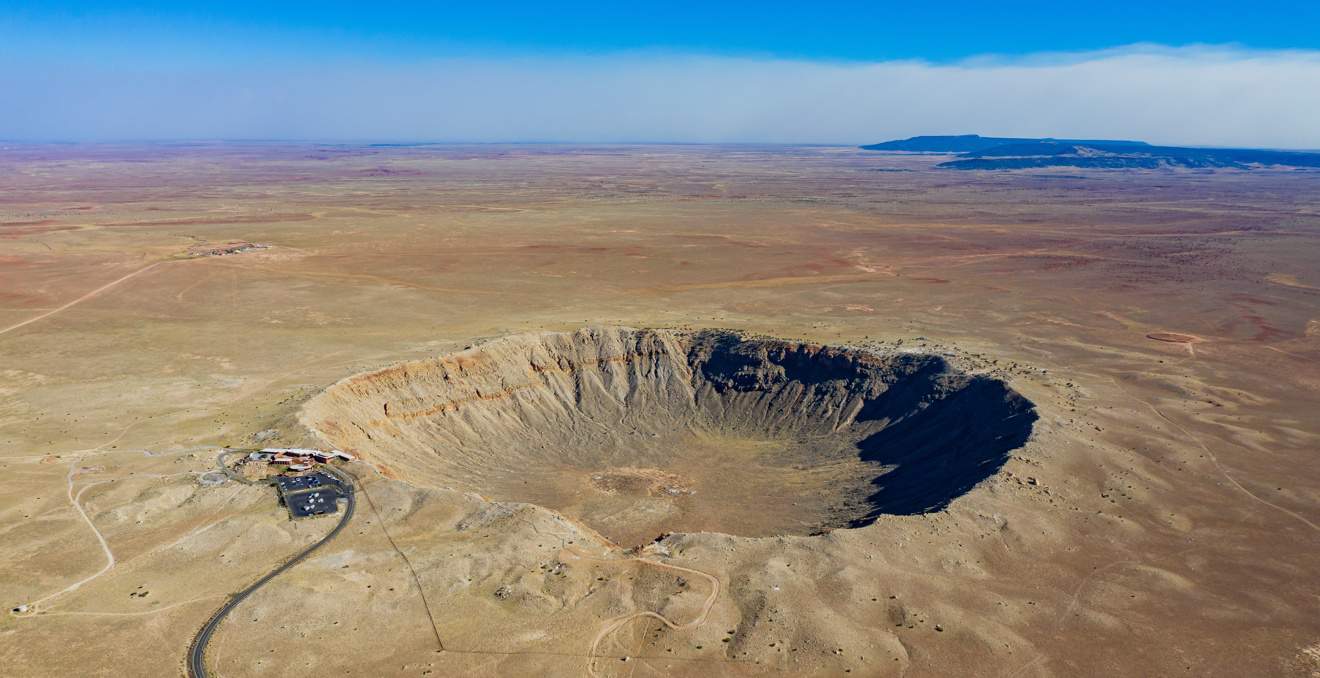
Located just outside of Winslow, Arizona, the Barringer Crater is an enormous meteor crater that must be witnessed in person to truly grasp its magnitude. Discovered by a man named Barringer, after whom it was named, the crater was formed approximately 50,000 years ago when the Canyon Diablo meteorite collided with the Arizona terrain at a speed of 26,000 mph. The impact, which was equal to 20 million tons of TNT, created a 700ft hole with a 4000ft diameter. Today, visitors can stand on the observation platform at the edge of the crater and marvel at one of the largest craters in North America. Afterward, the visitor center provides a wealth of information about the history of the Barringer Crater.
The colossal circular indentation that we see today was formed half a millennium ago by a collision with a fragment of an asteroid that was traveling at a speed of 26,000 mph. This collision resulted in a crater with a diameter of almost a mile, a circumference of 2.4 miles, and a depth of over 550 feet, making it one of a kind in the world.
Tourists can now visit the area and take in the scenic views by walking along the outer edges of the crater, as well as visit the well-equipped visitor center. Here, they can watch “Impact: The Mystery of Meteor Crater,” a film that uses state-of-the-art 3D animation and production technologies to recreate the sound and fury of the meteor as it thundered through the Earth’s atmosphere and collided with the surface.
Horseshoe Bend

This place is an absolute delight to see and should not be missed. Very easy to visit but please be VERY careful and don’t walk right upto the edge.
Hiking a short distance from the start of Grand Canyon National Park will take you to the horseshoe-shaped incised meander of the Colorado River. Accessible through the town of Page, the viewpoint is especially favored during sunset, when the landscape is most colorful and the iconic turquoise bend stands out against the orange cliffs. Although the hike through the desert is relatively straightforward, there is limited shade along the way, so it is advisable to bring protective gear such as hats, sunscreen, and adequate water.
To make the most of your visit to this location, consider booking a tour that includes other beautiful destinations like Glen Canyon Dam and Antelope Canyon.
The Colorado River, which flows at an altitude of 1,000 feet above sea level, meanders its way through the rocky plateau as it heads towards the Southwest. Due to the distinct geological characteristics of this desert terrain, the river is compelled to adopt an array of unusual shapes and curves.
Havasu Falls
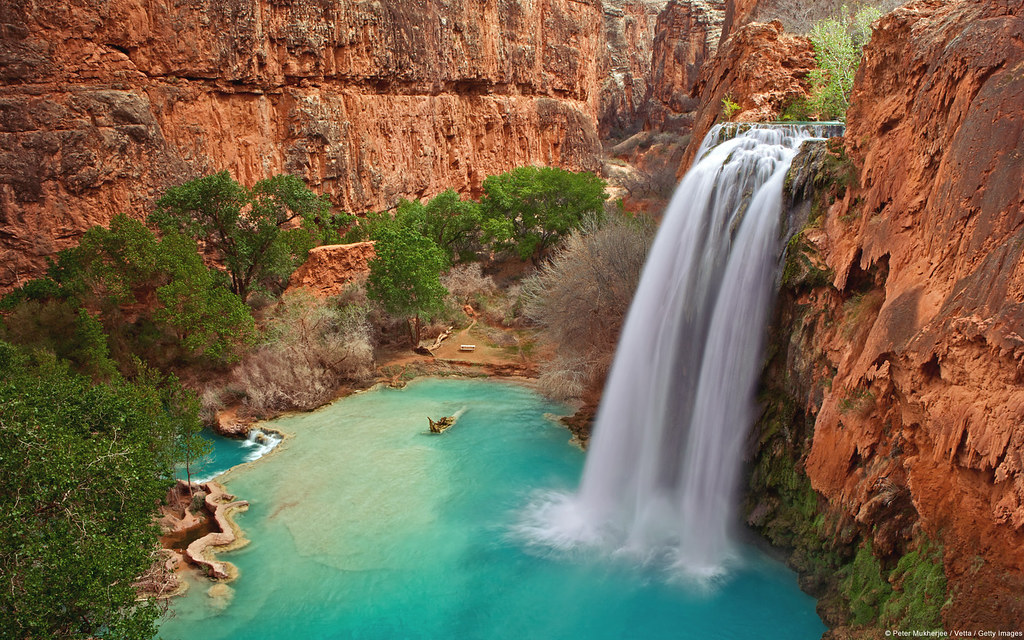
that rewards you with stunning turquoise waterfalls amidst the lush desert landscape. While it’s difficult to describe the allure of this bucket-list-worthy destination, the hike’s difficulty is a testament to the reward that awaits you.
Due to the popularity, strenuousness, and delicate nature of the landscape, visitors must plan carefully before embarking on this famous journey. Permits must be obtained in advance, and travelers can either stay at Havasupai Lodge or camp near the falls under the stars.
Once you have your permit in hand, the ten-mile hike begins with a descent of 1800 feet to reach the base of the Grand Canyon. The trail to the enchanting falls is ten miles in total.
SEDONA
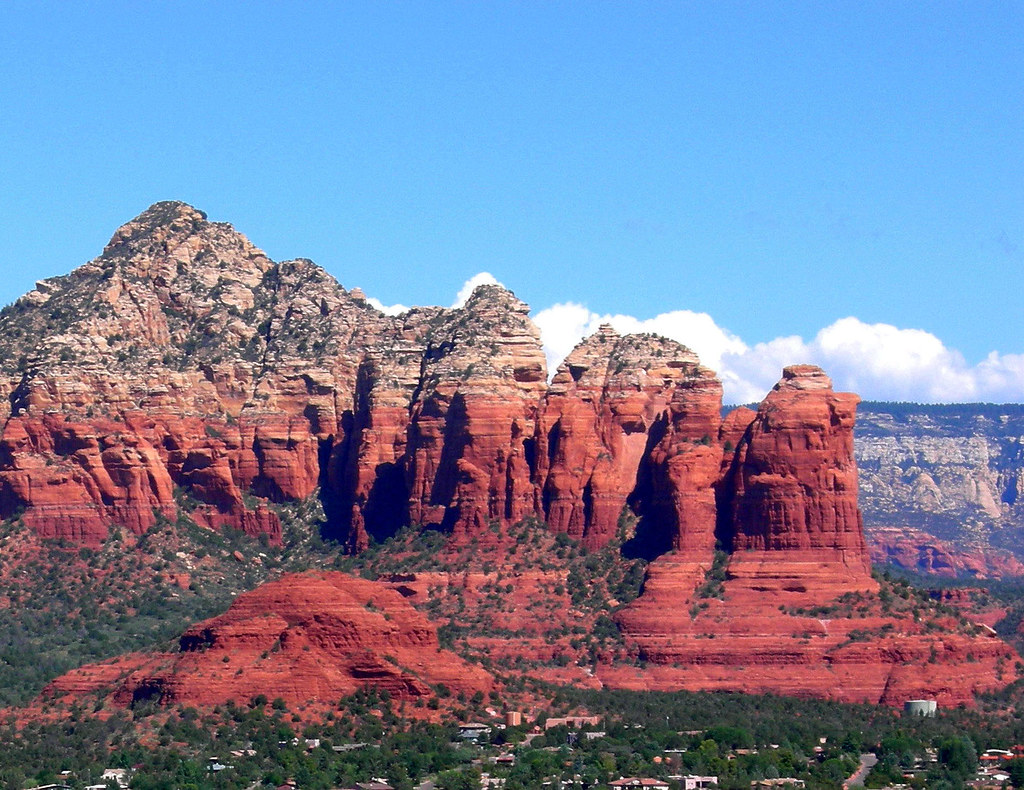
Located about 1.5 hours north of Phoenix, Sedona boasts a breathtaking setting surrounded by striking red rock mountains and buttes. The drive from the south, starting at the Village of Oak Creek, is equally spectacular and offers multiple scenic pullouts where visitors can take in the gorgeous views. Sedona’s landscape is uniquely colorful and dramatic, featuring towering red rocks and rugged sandstone buttes set against a backdrop of an almost always blue sky. It’s no wonder that professional and amateur artists have been drawn to this stunning natural wonder for years.
Sedona, located in north-central Arizona, is famous for its remarkable red sandstone formations that radiate a stunning glow during sunrise and sunset. In the 1980s, Sedona’s reputation as a New Age hub emerged when a psychic named Page Bryant claimed to have had a vision that identified energy vortexes in the area. Since then, many visitors have come to Sedona in search of spiritual healing and enlightenment.

